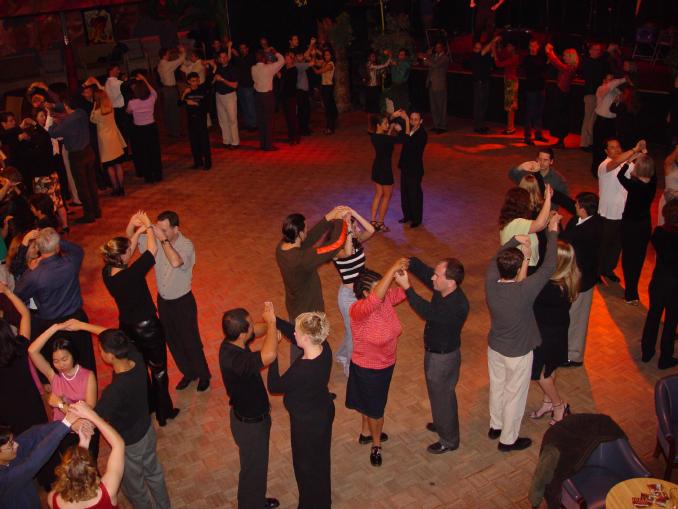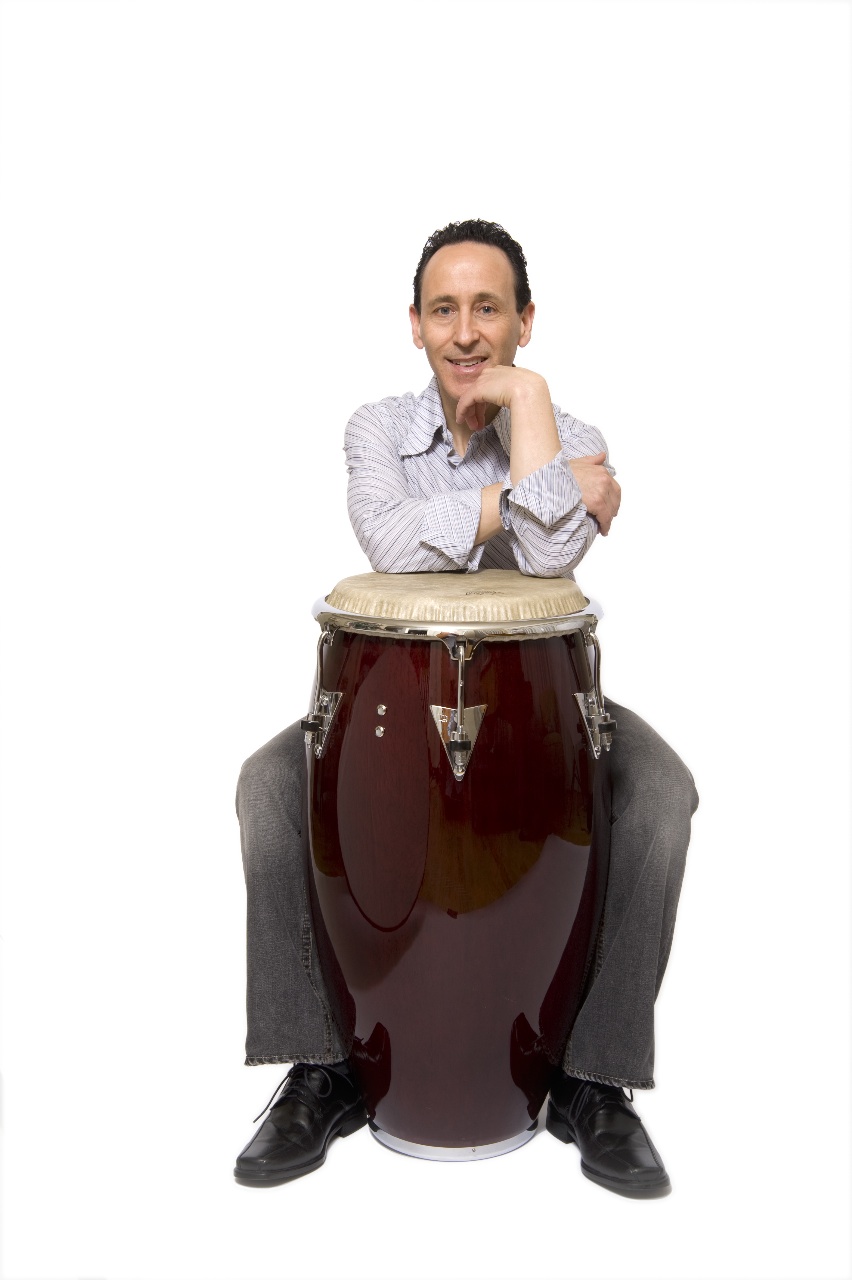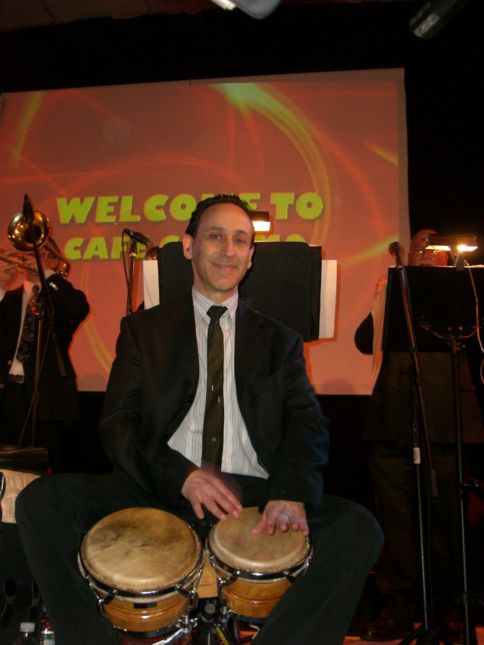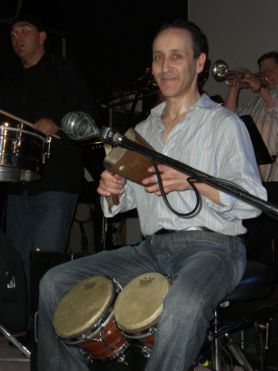SALSA RHYTHM AND PATTERNS TUTORIAL:
Jake 6-15-2009, updated 10-21-2010, 5-23-2011, 01-26-2021
![]() (Jan 2021) One clever salsero put together a phone application called the "Salsa Rhythm" which you can play with to understand how the different instruments contribute to the basic salsa rhythm, as we do below. If you'd like to try it out, download the app and play! For dancing practice, there are also metronome apps available for free... Nice.
(Jan 2021) One clever salsero put together a phone application called the "Salsa Rhythm" which you can play with to understand how the different instruments contribute to the basic salsa rhythm, as we do below. If you'd like to try it out, download the app and play! For dancing practice, there are also metronome apps available for free... Nice.
![]() (May 2011) Other teachers who are at the top of their game are also tuning their students in to the rhythm basics more and more these days too. This teacher Kelly Brown in St. Louis, MO has a nice site where he explains clave and the benefits of understanding the music when you dance: DANCING_ON_CLAVE (Note: each of his pages has music on it, so look at bottom left for the "Pause" symbol || to turn that off while reading if desired..)
(May 2011) Other teachers who are at the top of their game are also tuning their students in to the rhythm basics more and more these days too. This teacher Kelly Brown in St. Louis, MO has a nice site where he explains clave and the benefits of understanding the music when you dance: DANCING_ON_CLAVE (Note: each of his pages has music on it, so look at bottom left for the "Pause" symbol || to turn that off while reading if desired..)
![]() There is a pretty in-depth discussion of the CLAVE on Wikipedia too: Clave<-Check it out!
There is a pretty in-depth discussion of the CLAVE on Wikipedia too: Clave<-Check it out!
CHECK OUT JAKE'S NEW BAND: VibraSON! 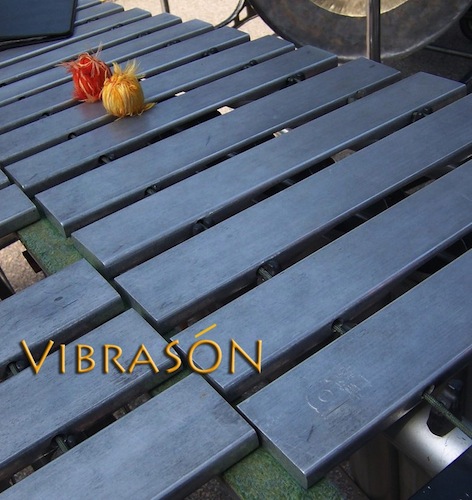 at www.VibraSONmusic.com or on Facebook at www.Facebook.com/VibraSONmusic
at www.VibraSONmusic.com or on Facebook at www.Facebook.com/VibraSONmusic
Now for our tutorial....
THE BASICS:
Salsa music is much like other music forms with the key difference being a greater focus on rhythms and a percussion section that involves multiple percussionists. If you have never studied music, it would be a good idea to check out the basic references on this site or obtain a basic music theory book to study up on the fundamentals. That being said however, a quick description follows:
All music is written showing the rhythm in “bars” of multiple beats in the music. For Salsa, the time signature is always “4/4” timing (with exception of some African based songs), meaning there is 4 beats per measure of the music. The beats of the music just count out the tempo of the song like a clock ticking. In Salsa, the clock ticks at basically the same rate throughout the song (some songs will speed up during the song but that is not the norm). As the clock ticks along and time passes, the musicians count out “measures” of time in 4 beats of the clock per unit time – measure. So, the musician’s count will simply be
1,2,3,4 | 1,2,3,4 | 1,2,3,4 | 1,2,3,4 | 1,2,3,4 | etc.
The vertical bars just represent the musical bar boundaries. All numbers above are separated by an equal amount of time = 1 clock tick. Please refer to my “Rhythm Cheat Sheet” to see this visually. Download from this site.
Dancers tend to count slightly differently than musicians. We count over 8 beats of music. There are rhythms in Salsa that are 8 beats long too as you’ll soon find out. But in terms of learning dance, it makes sense to count over 8 beats since that is the length of one basic step. Every move that is taught is always mapped onto 8 beat sections so that it matches the music and basic step itself. So, we count:
1,2,3,4,5,6,7,8 | 1,2,3,4,5,6,7,8 | etc.
For Salsa, we don’t dance on all 8 beats. We only step on 6 of those 8 beats. Hence the count misses numbers since the dancer’s count doesn’t say the numbers of beats where we don’t step. This is an implicit way of reminding people to step only on the beats for the basic step. Hence the count sounds more like:
1,2,3,and,5,6,7,and | 1,2,3,and,5,6,7,and | etc.
In musical terms, we don’t take a step on the 4th beat of every measure, or beats 4 and 8 of the dancer count. But it is a good idea to say something on those beats (“and” in this case” so that you count evenly like a metronome or clock!
In the S.F. Bay Area, most teachers started teaching with the “six-count” since there are only 6 steps in the basic over the 8 beats. This had advantages, especially when teaching beginners and it is also shown on the Rhythm Cheat Sheet. But today, almost all teachers world wide count in 8 and hence it is more conventional and uniform to do so.
So, that is the basic rhythm that will affect everything that you learn in dancing. In advanced dancing, where dancers do “open work” or dance alone to the music, some dancers will dance on beats other than the basic step beats. As long as it is musical, it works, but as you first learn salsa, it is best to stick to the basic beats!
Note that musically, it is normal to use any of the beats in the measure AND half beats or third beats or quarter beats, etc. That is the richness of music. So, for example, if someone plays halfway between the time of two beats (an ‘eight note’) in the count, it is often called an “up beat” while playing exactly on the beats are called ‘down beats” – the analogy being a drum stick going up and down on each beat…
AFRO CUBAN MUSIC AND THE CLAVE
Some of you have heard of the “clave” already for certain. All Latin music is based on this ancient rhythm. The African clave is actually in 6 beats rather than 8 beats. This is why in some Salsa songs, the rhythm changes to a “6/8” measure to quote this African rhythm. But mainly, the music stays in 4/4 time and it is based on an 8-beat version of the clave. The clave, being a 2-measure rhythm, make it another good reason to count over two measures as dancers too.
The Rhythm Cheat Sheet shows the beats of the clave. Note that one of the clave notes is on an up-beat – between beats 6 and 7 of the count. The following audio clip explains the rhythm and how it fits the beats of the count:
SAMPLE: 2-3 clave with counting
Music is “phrased” differently on different songs. In some cases, the emphasis of the music is on the 2-side of the clave. This means that musical phrases or lyrics start on the measure that is the 2-side of the clave. Hence, such music is referred to as being in “2-3 Clave”. In other cases the phrasing is such that the emphasis is on the 3-side. That music is referred to as being in “3-2 Clave”, which is explained in the following clip:
SAMPLE: 3-2 clave with counting
To make matters even more confusing, the phrasing of the music often changes DURING the same song. So, the clave sense will change from 2-3 to 3-2 and visa-versa during a song. NOTE that the clave itself never changes from start to end of any song. It is just the phrasing of the music that changes! Any section of music that has an odd number of measures will cause the clave (2-3 to 3-2 or opposite) to switch.
As dancers, we don’t always conform to a particular clave, but this is a matter of debate. Some dancers are pedantic about dancing ‘on clave’ and will start their step with the 2 side of the clave. When the song changes clave, some dancers stop and start again to stay always such that their count “1” is on the first measure of the clave in that section of the song. But it is very rare that you will meet dancers that consider this when they dance. And if the dancers are experienced, they can make the switch so that it is not very noticeable so you may not even realize it is happening unless you’re intimate with the music.
SALSA BAND MEMBERS
A salsa band often has 3 percussionists. In some music called “Conjunto style” there are only 2 percussionists. The 3 players play different rhythms that fit together to form the overall complex rhythm, which is why many people that don’t grow up with salsa music have trouble hearing the beat through all of this activity. In a jazz band for example, the rhythm section is normally just bass and drums.
The 3 percussionists play 1) Conga, 2) Bongo/Bell, 3) Timbale.
Additionally there is almost always a piano and bass present forming the rest of the basic rhythm section.
Beyond those players, there is usually a group of horn players and singers. Sometimes a flute is present and in some music called Charanga, a violin is present. In some music there is a marimba as well, and/or a Tres –which is similar to a guitar. Often the singers will play small percussion instruments too in order to fill out the rhythms. These include Guiro (“scratcher”), Maracas, and blocks of wood called Claves which are used to play the Clave directly!
Rhythm instruments typically play a “basic” too – in other words, they play a basic rhythm as their part when the music is steady. In songs, there are often “breaks” which are extra rhythmic passages and of course each player will embellish their playing with other variations as they play. The basic rhythm is called “Tumbao” or sometimes “Marche” – like marching together in an army formation.
THE CONGA RHYTHM
The conga drum is the core of the rhythm section and it plays a rhythm that emphasizes 2 and 4 of the musical beat (2,4,6,8 of the dancer’s count). It is explained in the following clip:
SAMPLE: Conga beat explanation
Here is a clip of the conga beat with the clave on top of it:
SAMPLE Conga beat medium with Clave
The “slap” that the conga player hits on beat 2 is loud and identifiable and dancers that dance on-2 will use that to sync up. But it can be very confusing to people trying to find “1” in the overall count!
THE BASS RHYTHM
The bass tumbao is actually a subset of the clave itself. Note that ALL of the rhythms discussed here contain emphasis on clave beats which gives the overall music the feel of the clave. So, experienced listeners can pick out the clave quickly in the music.The bass plays the upbeat between musician’s count 2 and 3 plus the beat 4 in every measure. This is like repeating the last two notes of the 3 side of the clave continuously. It is explained in the following clip:
SAMPLE : Bass beat with counting
THE PIANO RHYTHM
The piano plays a basic rhythm called “montuno” which is also the type of music from which Salsa derives. It is explained in the sample below:
SAMPLE: PIANO medium with counting
THE BELL AND GUIRO
The bongo player in the band plays drum during the verses or “down” sections of the music. The basic marche rhythm for bongo is only 1 measure long and it is basically 1-and-2-and-3-and-4-and, or every ½ beat. The sound played on 4 of the beat is on the lower of the two drums in the bongo and hence a lower sound.
When the music energy picks up, the bongo player in turn picks up his bell or campana and plays to keep a basic time for the band. The open sound – when he hits near the mouth of the bell – comes on beats 1 and 3 of every measure and is often referred to as the pulse. If you dance on-1 and you break on the open sound of the bell, then you’ll be breaking on the beat 1 or beat 3 of each measure. Many dancers cannot hear the difference, and you’ll often see dancers dancing on either of those two beats in a salsa club.
The Guiro is traditionally made from a gourd with ridges cut in it to make a scratching sound with a stick is pulled along the ridges. The sounds of the Bongo Bell and the Guiro are explained in the next clip:
SAMPLE: BELL AND GUIRO medium with counting.
THE TIMBALE
The third main percussion player in a salsa band plays the closest thing resembling drums in non-Latin music. Two metal drums are mounted on a stand along with bells and one or two cymbals. The timbale player also switches roles during a song, playing the sides of the drums (called the shells) a rhythm called “cascara” during the lower energy portions of the song (when the Bongo player plays his drum) and then moving up to the bell and cymbal during the high-energy portion. These rhythms are a bit more complex and there is no sample of them in this tutorial, but they are described in Rebecca’s book on basic salsa rhythms.
THE SALSA SONG
Putting these all together forms the complex rhythms of a salsa song. Beyond that, the song structure is often very much like any pop song with one or two verses, followed by a chorus section. In salsa, the chorus section is called the “mambo section” and it is the higher energy portion where the bells are played. It is also the easiest to hear the beats, which can be unfortunate since most songs do not start with a mambo section!
Singers sing the versus and during the chorus section, they engage in “coro/pregon” where a chorus is sung and then a lead singer often improvises during sections between the chorus to tell a story. It is the same structure of “call and response” that makes up such a large portion of this type of music, dating back to the ancient African rhythms themselves such as Clave, which were the way tribes communicated from a distance – with calls and responses.
The horns play melodies too like in pop music and often play a repeating phrase called a “mona” during the mambo section of the song. All together you have a salsa song.
The samples below contains the elements described above together:
SAMPLE : Full band medium with counting
SAMPLE Full band medium without counting
With horns added and an arrangement, a full salsa song is exemplified with the sample below:
SAMPLE : Full Salsa Song
SUMMARY
I hope this has helped explained the complexities of salsa music to you as you begin your journey into Latin music and dance. The music is rich and varied and dates back to sounds from hundreds of years ago, which may be why it affects people so deeply. To be a good dancer, you HAVE to relate to the music since the music inspires the dance and rhythms in the music are also inspired by dance too. But most importantly is to express the music when dancing and to have good musicality. Dancers that simply do a series of moves, however complex, look mechanical and do not represent the music well. So, listen, listen, listen and become familiar with what you hear. It will make your dancing experience tremendously more enjoyable!
For training purposes, try to listen to the clips in this tutorial and then play some music and count along with it. Try to hear the parts described above and pick them out of each song. Be sure you’re counting your “1” on the first beat of a measure. And then of course, use this count to synchronize your steps. As you become more familiar with the songs, you’ll be able to express them better. And if you are lucky enough to live in a place with live music such as the S.F. Bay Area, please pay attention to what’s going on up there on stage. It is an education in itself and a huge part of the fun of dancing…
Regards,
Jake
www.SalsabyJake.com
OTHER RESOURCES: ONLINE VIDEOS (Free)
Check out the links HERE on our "Hearing the Beat" page for other online videos that may be used to improve your understanding of timing...
DO YOU NEED A SALSA / LATIN JAZZ BAND FOR YOUR PARTY OR EVENT!?!??
THEN PLEASE CONTACT JAKE THROUGH THIS WEB SITE! I can configure a great band for you of almost any size, and help with your entertainment!
